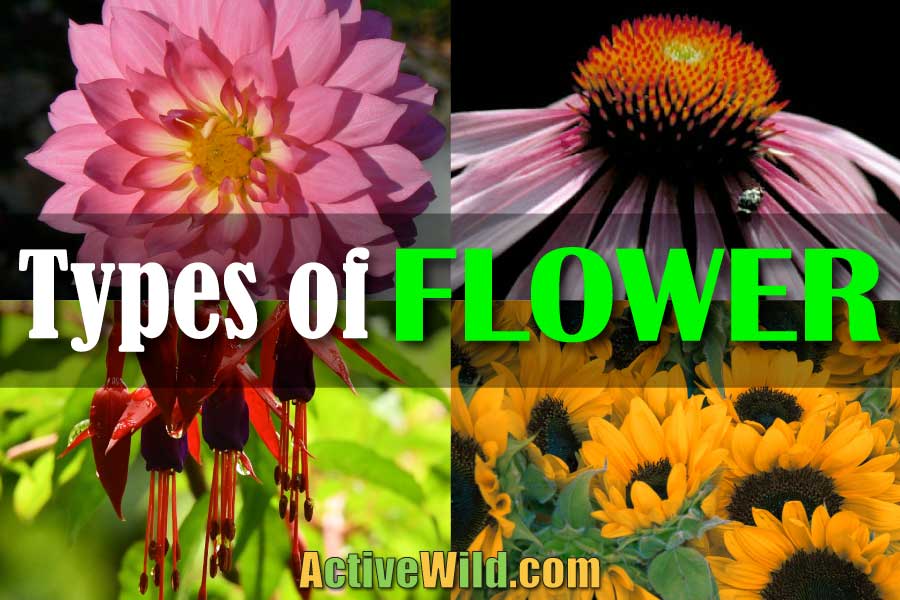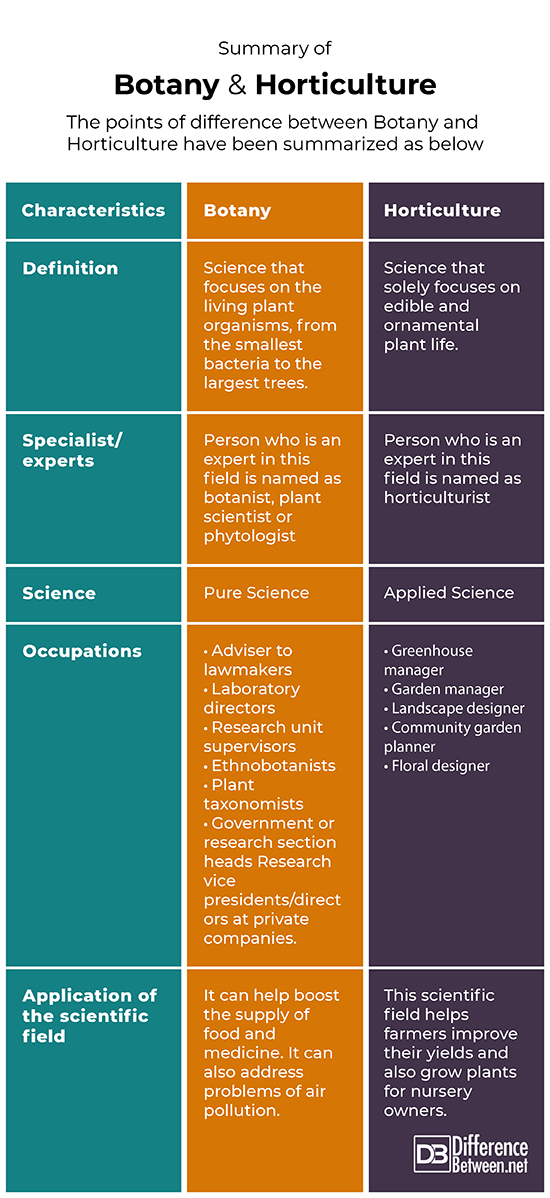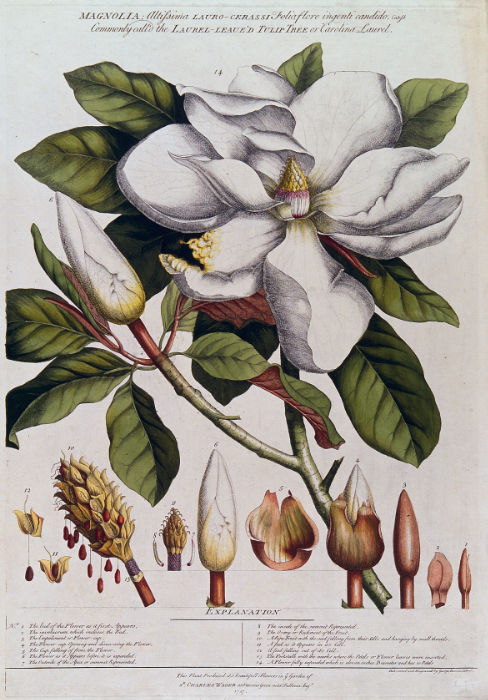Floral refers specifically to flowers, while botanical encompasses all aspects of plants. Floral and botanical are two terms used to distinguish between flowers and plants as a whole. What is difference between botanic and botanical? let’s explore
Floral specifically refers to anything related to or associated with flowers, such as floral arrangements, floral patterns, or floral scents. On the other hand, botanical is a broader term that encompasses all aspects of plants, including flowers, leaves, stems, roots, and even fruits.
While floral focuses solely on flowers, botanical encompasses a wider range of plant-related topics. Understanding the difference between floral and botanical is essential in various fields, such as horticulture, botany, and floral design, where the specificity of these terms is crucial in conveying accurate information.

Credit: www.activewild.com
Botanical And Floral: An Introduction
When it comes to the world of plants and flowers, the terms ‘botanical’ and ‘floral’ are often used interchangeably, but they actually have distinct meanings. To understand the difference between the two, it’s essential to comprehend the defining characteristics of each.
Defining Botanical
Botanical refers to anything related to plants, including their structure, growth habits, and classification. It primarily focuses on the scientific study of plants, encompassing their physiology, ecology, and genetics. In essence, botany pertains to the rigorous, technical aspects of plant life, delving deep into the intricate details that make up the natural world around us.
Understanding Floral
Floral, on the other hand, is specifically associated with flowers. It encompasses the artistic and aesthetic elements of plants, highlighting their beauty, color, and fragrance. Unlike botanical, which leans toward the scientific, floral is more about the visual appeal and ornamental qualities of flowers. It encapsulates everything from floral arrangements to the symbolic meanings associated with different types of flowers.

Credit: www.differencebetween.net
Botanical Vs. Floral: Key Characteristics
Understanding the difference between botanical and floral is essential as these terms are often used interchangeably. While they share a close relationship, there are distinct characteristics that set them apart. This article will explore the key differences between botanical and floral, focusing on structural differences, the focus on plant parts, the scientific classification, and their application in various industries.
Structural Differences
Structurally, botanical and floral differ in their composition and arrangement. Botanical refers to all aspects related to plants, including their roots, stems, leaves, and reproductive structures. On the other hand, flora specifically pertains to the reproductive structures of a plant, such as flowers, fruits, and seeds. While flowers are the most recognizable form of floral, it’s important to note that not all botanical structures are considered floral.
Focus On Plant Parts
When examining botanical and floral aspects, it is important to understand the focus on different plant parts. Botanical focuses on plant structures as a whole, encompassing roots, stems, leaves, and other vegetative components. This field of study explores plant growth, development, adaptations, and ecological interactions. In contrast, floral specifically centers around the reproductive structures of plants. It evaluates flower development, pollination mechanisms, and seed dispersal.
Scientific Classification
In terms of scientific classification, plants fall under the kingdom Plantae. Within this kingdom, plants are further classified into various divisions, classes, orders, families, genera, and species. Botanical studies primarily encompass these classifications and the broader understanding of plant taxonomy. Floral, however, focuses on the specific characteristics and classification of flowers, fruits, and seeds. It delves into the identification of floral structures, their arrangement, and variations across different plant species.
Application In Various Industries
The distinction between botanical and floral has significant applications across various industries. Botanical knowledge is crucial in fields such as agriculture, horticulture, forestry, and environmental sciences. It helps in understanding plant growth patterns, disease resistance, and developing strategies for crop cultivation. Floral knowledge, on the other hand, finds its utility in the floral industry, including flower cultivation, arrangement, and design. It also plays a role in sectors such as pharmaceuticals, where the medicinal properties of plants and their reproductive structures are studied.
Botanical And Floral: Applications
Botanical and floral applications are two distinct aspects of the world of plants, each with its own unique features and uses. Understanding the difference between the two can help us appreciate the diverse applications of both botanical and floral elements.
Botanical Applications
Botanical applications encompass a wide range of uses for plant-based materials and knowledge. This includes various fields such as medicine, skincare, food, and even art. In medicine, plants are often utilized for their therapeutic properties, with many botanical remedies dating back centuries. From herbal teas to natural remedies, plants play a vital role in traditional and alternative medicine. Additionally, botanical extracts and ingredients can be found in a plethora of skincare products, owing to their nourishing and rejuvenating properties.
Furthermore, the culinary world heavily relies on botanical ingredients for flavoring, garnishing, and enhancing dishes. Plants like herbs and spices are meticulously selected to provide distinct tastes, aromas, and colors to culinary creations. Chefs worldwide use botanicals to elevate their dishes, creating a delightful experience for food enthusiasts.
Lastly, botanical art serves as a means of combining visual aesthetics with scientific accuracy. Botanical illustrations, often depicting different plant species, are highly detailed and meticulously drawn to represent plants as accurately as possible. These illustrations are not only visually striking but also serve as valuable references for botanists, researchers, and enthusiasts.
Floral Applications
Floral applications, on the other hand, focus specifically on the use of flowers in various contexts. Flowers have long been cherished for their beauty, fragrance, and symbolism, making them a popular choice for decoration and gift-giving.
When it comes to events and celebrations, flowers adorn venues, creating an ambiance of elegance and natural beauty. From weddings to birthdays and even funerals, flowers add an instant touch of sophistication and emotion to any gathering. Additionally, floral arrangements can be tailored to match specific themes or color schemes, offering a personalized touch to any event.
Floristry, the art of arranging flowers, has a significant impact on the way flowers are presented. It involves the skillful combination of different flowers, foliage, and other materials to create stunning bouquets, centerpieces, and floral installations. The artistry involved in floristry allows for unique creations that can be tailored to suit individual preferences and occasions.
Moreover, flowers are not limited to event decoration; they are also used in the fragrance industry. Many perfumes and colognes feature floral notes, capturing the essence and allure of various flowers. The aroma of flowers has a powerful effect on our senses, evoking emotions and memories.
In conclusion, while botanical applications involve a broader range of plant-based uses, floral applications focus specifically on the beauty and symbolism of flowers. Both botanical and floral elements have their own unique applications and play important roles in various industries and aspects of our lives.
Botanical And Floral: Similarities And Overlapping Areas
When it comes to the world of plants, the terms “botanical” and “floral” are often used interchangeably. However, they have distinct differences and yet share some similarities. Understanding these nuances can enhance our appreciation for the beauty and complexity of the natural world.
Shared Elements
At first glance, it may seem challenging to differentiate between the botanical and floral realms. Both involve the study and depiction of plants, showcasing their mesmerizing colors and forms. Are flowers considered botanical? The answer is yes. Flowers fall under the broader botanical category, as they are part of the plant kingdom. Understanding this relationship allows us to appreciate how flowers are just one aspect of the vast botanical world.
While flowers are undoubtedly a key component of botanical art, it is essential to remember that not all botanical art exclusively features flowers. What style is botanical? Botanical art encompasses a broader range of subjects, including leaves, fruits, seeds, stems, and even roots. This diversity highlights the detailed illustrations and focuses on the accurate representation that is characteristic of botanical art.
Interdisciplinary Connections
Both botanical and floral art find overlapping areas within various fields, forging interdisciplinary connections. One such connection is with botany, the scientific study of plants. Botanical illustrations play a crucial role in botany, aiding researchers in identification, taxonomy, and documentation. In addition, botanical art can also be invaluable for environmental conservation efforts by raising awareness about threatened plant species.
Another field that shares a close bond with botanical and floral art is horticulture. As horticulturists work to cultivate and enhance plants’ beauty and health, they often turn to botanical and floral art for inspiration. These artistic depictions showcase various plant characteristics, guiding horticulturists in creating stunning landscapes and designing aesthetically pleasing garden compositions.
Furthermore, the field of home decor finds harmonious connections with both botanical and floral art. Nature-inspired motifs are frequently incorporated into interior design, creating a sense of serenity and bringing the outdoors inside. Botanical and floral art pieces serve as captivating focal points, adding a touch of elegance and freshness to living spaces.
By recognizing the similarities and multifaceted connections between the botanical and floral realms, we can gain a deeper understanding of their artistry and significance. Whether we delight in the rich, vibrant petals of a flower or marvel at the detailed depiction of a plant’s anatomy, both botanical and floral art enables us to marvel at the wonders of the natural world.
Exploring The Distinction: Botanical Garden Vs. Flower Garden
Explore the difference between botanical gardens and flower gardens to understand their unique characteristics. While flower gardens primarily feature a variety of flowering plants arranged for aesthetic appeal, botanical gardens focus on showcasing a diverse collection of plant species, emphasizing scientific and educational aspects.
Botanical Garden
A botanical garden is a curated space dedicated to the cultivation, study, and display of a wide variety of plants. These gardens prioritize the scientific and educational aspect of plant life. Botanical gardens often showcase plants from different parts of the world, including rare and endangered species. The primary goal of a botanical garden is to promote botanical research, conservation, and education.
Flower Garden
On the other hand, a flower garden is primarily focused on the beauty and aesthetics of flowers. It is a space designed to exhibit and grow a diverse range of flowering plants. Flower gardens are typically created to enhance the visual appeal of a landscape and provide an enjoyable experience for visitors. These gardens are often found in residential areas or parks, where they serve as tranquil spaces where people can relax and appreciate the vibrant colors and fragrances of the blooms. Are flowers considered botanical? Yes, indeed! While a botanical garden may contain a vast array of flowering plants, its scope extends far beyond just flowers. Botanical gardens encompass a wide range of plant species, including trees, shrubs, ferns, and herbs. In contrast, a flower garden specifically emphasizes the cultivation and display of various types of flowers, focusing extensively on their visual appeal and ornamental value. What style is botanical? The style of a botanical garden is more formal and structured compared to a flower garden. Botanical gardens are carefully curated and organized, often featuring themed sections and collections based on plant families, geographic origins, or ecological characteristics. In contrast, flower gardens tend to have a more informal and naturalistic layout, with an emphasis on the artistic arrangement of flowers and the creation of a visually pleasing landscape. In conclusion, while both botanical and flower gardens celebrate the beauty of plants, they differ in purpose and style. Botanical gardens prioritize research, conservation, and education, showcasing a wide range of plant species beyond just flowers. Flower gardens, on the other hand, are created to enhance the visual appeal of landscapes and provide a delightful sensory experience through the vibrant colors and fragrances of various flowers. Both types of gardens have their unique charm and contribute to our appreciation and understanding of the botanical world.

Credit: en.wikipedia.org
Frequently Asked Questions On What is difference between botanic and botanical?
What Is The Difference Between Floral And Botanical Design?
Floral design typically involves arranging cut flowers, while botanical design involves using living plants and flowers in their natural state.
Why Is It Important To Understand The Difference Between Floral And Botanical?
Understanding the difference helps in choosing the right type of design for specific settings, such as events, home decor, or landscaping.
How Do Floral And Botanical Designs Differ In Terms Of Maintenance?
Floral designs may require regular replacement of cut flowers, while botanical designs require care for living plants to thrive.
What Are The Key Factors To Consider When Choosing Between Floral And Botanical Design?
Consider factors such as the desired aesthetic, budget, environmental impact, and the level of maintenance you’re willing to commit to.
Conclusion
Floral and botanical may seem similar, but understanding their differences is important. While floral refers specifically to flowers, botanical encompasses a broader range of plants and their scientific study. Whether you’re a nature enthusiast or a curious learner, knowing the distinction between these terms will enhance your knowledge and appreciation of the natural world.
Explore the intricacies of botany and the elegance of floral arrangements to uncover the beauty that nature has to offer. Expand your horizons and embrace the wonders that both floral and botanical can bring to your life.










